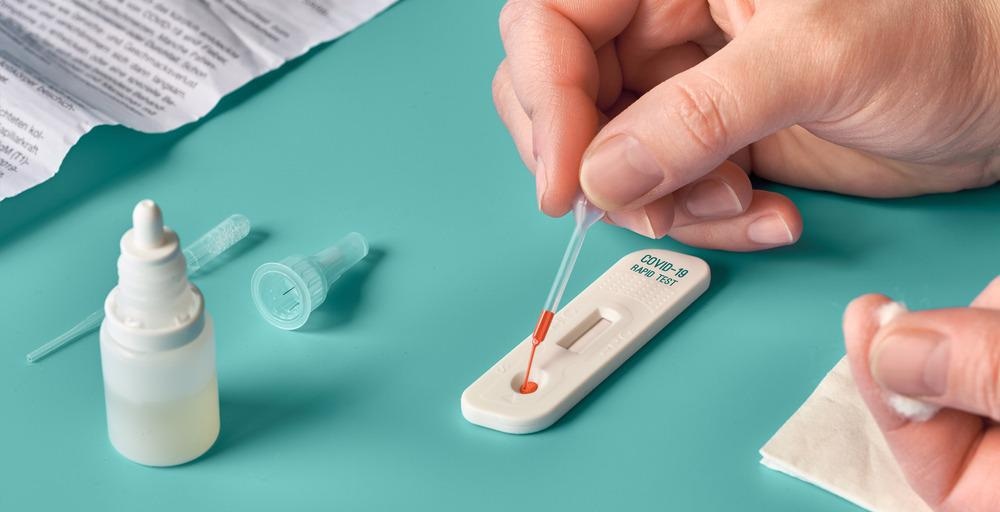
Image Credit: anyaivanova/Shutterstock.com
Because 3D printing allows for it to be deployed quickly and easily, a newly developed at-home COVID-19 test could be a game-changer in the ongoing battle against the virus.
Ever since the start of the worldwide COVID-19 pandemic in 2019, governments around the globe have rushed to develop assessment, tracing, and isolation plans intended to stop the spread of the virus. Despite the fact that many testing facilities have been built and vaccination rates are rising, there is still a need for mass COVID testing and there are still many deficits with respect to population screening, largely due to structural issues, particularly in remote and underdeveloped areas.
At-Home Testing for COVID-19
One promising solution to make up for testing shortfalls is to facilitate at-home testing that the average person can self-administer.
The preferred COVID-19 test method uses genetic technology known as polymerase chain reaction (PCR), but the complex nature of PCR testing makes it difficult for self-testing. Another genetic technique known as Loop-mediated Amplification (LAMP) is much simpler to administer and can detect COVID-19 infections in the earliest stages. Commercially available LAMP solutions evaluate test specimens by warming them to between 60 °C and 70 °C, but the results of these at-home tests can be unreliable. Because of this, researchers from Wageningen University in the Netherlands have developed a novel COVID-19 self-administered test.
The Coronaspresso COVID-19 Test
To facilitate an at-home testing setup, the researchers tested an array of household appliances that could be used as a heat source for their LAMP-based tests as a means of heating their samples. After considering the standard household oven, dishwasher, and other appliances, the study team was able to successfully develop a testing model that uses a single-serve Nespresso coffeemaker, and thus dubbed their system the "Coronaspresso".
The system uses a cheap, paraffin-based wax with a melting point of around 64 °C. The wax enables specimens to be warmed at a steady rate, for a relatively low price.
To perform a test, 6 grams of paraffin wax was placed inside an empty Nespresso pod and the pod was suspended in a pot of boiling water. Test vials were then loaded with samples and primers, which were designed to identify a specific tell-tale region of the COVID-19 genome. A foam insert and 3D-printed vial holder were placed on top of the wax and the test vials were then suspended in the melted wax for 25 minutes.
After the samples cooled for three minutes, the researchers performed a visual inspection of their LAMP test vials: A pH reaction triggered by the presence of COVID-19 genetic material caused a yellow-hued color to appear in the vial. In their study report, the researchers said they were able to confirm a high degree of efficacy for their novel solution using PCR tests for comparisons.
While the scientists effectively confirmed their method, they recognized that it currently needs a complex RNA-extraction step before testing can commence. Also, while the vial holder could be 3D printed, the paraffin wax, Nespresso vials, foam float, test vials, and test reagents all need to be sourced.
The Dutch university team said they plan to work on developing a better kit that is able to directly test saliva, as well as test for other infectious diseases.
Using 3D Printing in the Battle Against COVID-19
Since the pandemic started, 3D printing has been implemented in several ways to combat the disease, including in the creation of novel assessment kits. In one effort, Carnegie Mellon University researchers made 3D-printed sensors that could identify COVID-19 antibodies within ten seconds.
Many 3D printing service providers have expanded their mission to produce nasal swabs. A 3D-printed swab was found to have results that matched 90% of results taken via commercial swabs, and, in another effort, the matching rate was 94%. Both results were deemed to indicate the swabs are satisfactory.
In reaction to the expanded production of nasal swabs and other medical devices, the Food and Drug Administration (FDA) issued corresponding updated guidance related to 3D printing diagnostic items for COVID-19. For nasal swabs, the FDA said it does not need pre-market notification, and manufacturers do not need emergency use authorization (EUA) for distribution.
One of the several primary benefits of 3D printing is its direct-from-digital nature. Because a user can readily generate items from digital files, designs can be easily sourced from internet repositories. Right now, there are numerous file repositories that offer user-shared 3D-printable files. These databases permit the free exchange of files and information for 3D printing.
Nasal swab designs can be found on online file databases, including a model designed by researchers at Johns Hopkins University. Even though these designs come from prominent sources, it is difficult to confirm which designs have gone through any clinical validation.
Resources and Further Reading
Hanaphy, P. Scientists’ rapid new COVID-19 test kit can be 3D printed for less than 20p. 3D Printing Industry. [Online] Available at: https://3dprintingindustry.com/news/scientists-rapid-new-covid-19-test-kit-can-be-3d-printed-for-less-than-20p-188575/
Smith, L. Your Nespresso pods could soon double as a COVID-19 test. Fast Company. [Online] Available at: https://www.fastcompany.com/90622543/your-nespresso-pods-can-double-as-a-covid-19-test
Longhitano, G. et al. The role of 3D printing during COVID-19 pandemic: a review. Progress in Additive Manufacturing. [Online] Available at: https://www.ncbi.nlm.nih.gov/pmc/articles/PMC7685299/
Disclaimer: The views expressed here are those of the author expressed in their private capacity and do not necessarily represent the views of AZoM.com Limited T/A AZoNetwork the owner and operator of this website. This disclaimer forms part of the Terms and conditions of use of this website.